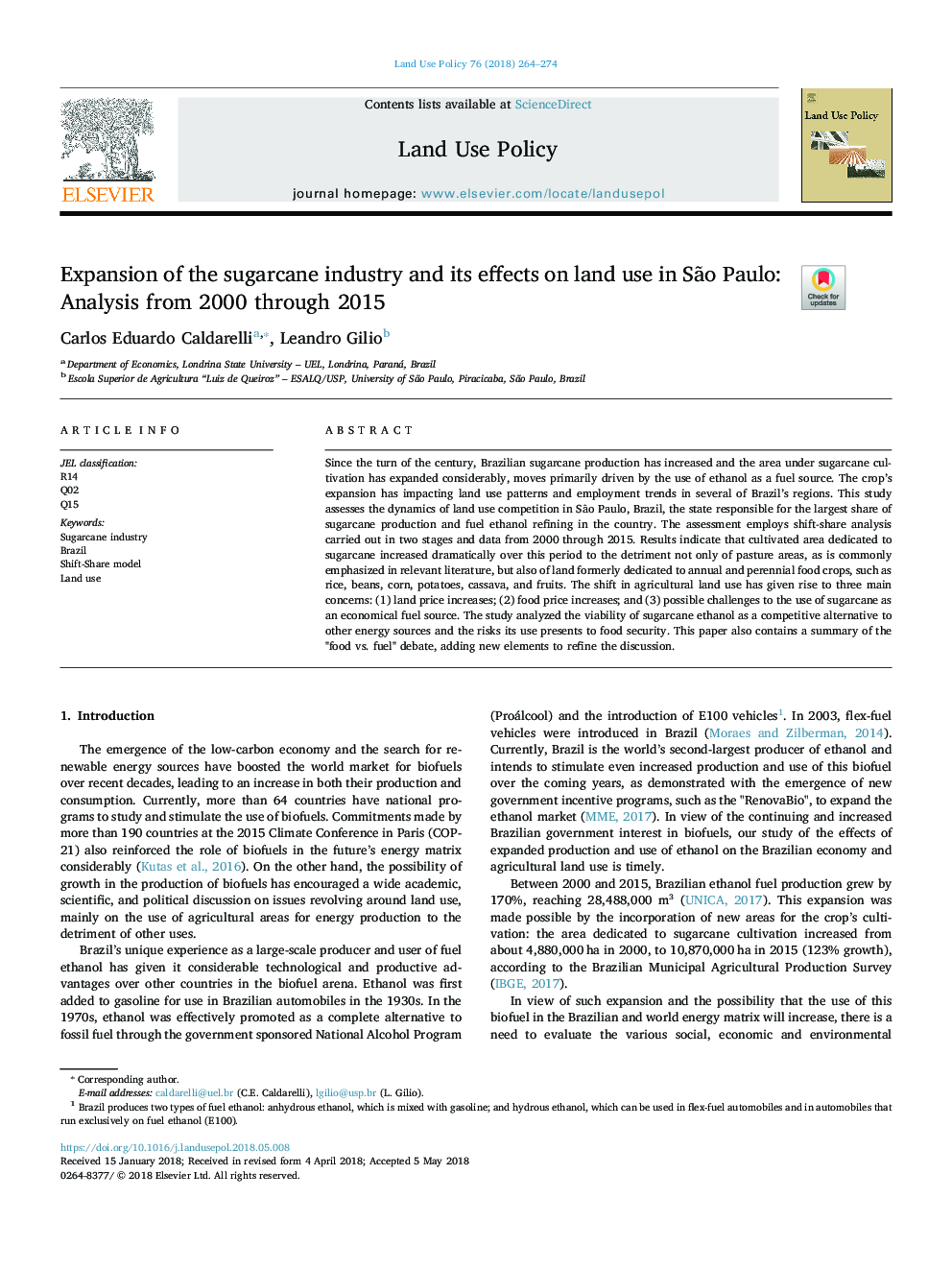| کد مقاله | کد نشریه | سال انتشار | مقاله انگلیسی | نسخه تمام متن |
|---|---|---|---|---|
| 6546264 | 1421807 | 2018 | 11 صفحه PDF | دانلود رایگان |
عنوان انگلیسی مقاله ISI
Expansion of the sugarcane industry and its effects on land use in São Paulo: Analysis from 2000 through 2015
دانلود مقاله + سفارش ترجمه
دانلود مقاله ISI انگلیسی
رایگان برای ایرانیان
کلمات کلیدی
موضوعات مرتبط
علوم زیستی و بیوفناوری
علوم کشاورزی و بیولوژیک
جنگلداری
پیش نمایش صفحه اول مقاله

چکیده انگلیسی
Since the turn of the century, Brazilian sugarcane production has increased and the area under sugarcane cultivation has expanded considerably, moves primarily driven by the use of ethanol as a fuel source. The crop's expansion has impacting land use patterns and employment trends in several of Brazil's regions. This study assesses the dynamics of land use competition in São Paulo, Brazil, the state responsible for the largest share of sugarcane production and fuel ethanol refining in the country. The assessment employs shift-share analysis carried out in two stages and data from 2000 through 2015. Results indicate that cultivated area dedicated to sugarcane increased dramatically over this period to the detriment not only of pasture areas, as is commonly emphasized in relevant literature, but also of land formerly dedicated to annual and perennial food crops, such as rice, beans, corn, potatoes, cassava, and fruits. The shift in agricultural land use has given rise to three main concerns: (1) land price increases; (2) food price increases; and (3) possible challenges to the use of sugarcane as an economical fuel source. The study analyzed the viability of sugarcane ethanol as a competitive alternative to other energy sources and the risks its use presents to food security. This paper also contains a summary of the "food vs. fuel" debate, adding new elements to refine the discussion.
ناشر
Database: Elsevier - ScienceDirect (ساینس دایرکت)
Journal: Land Use Policy - Volume 76, July 2018, Pages 264-274
Journal: Land Use Policy - Volume 76, July 2018, Pages 264-274
نویسندگان
Carlos Eduardo Caldarelli, Leandro Gilio,